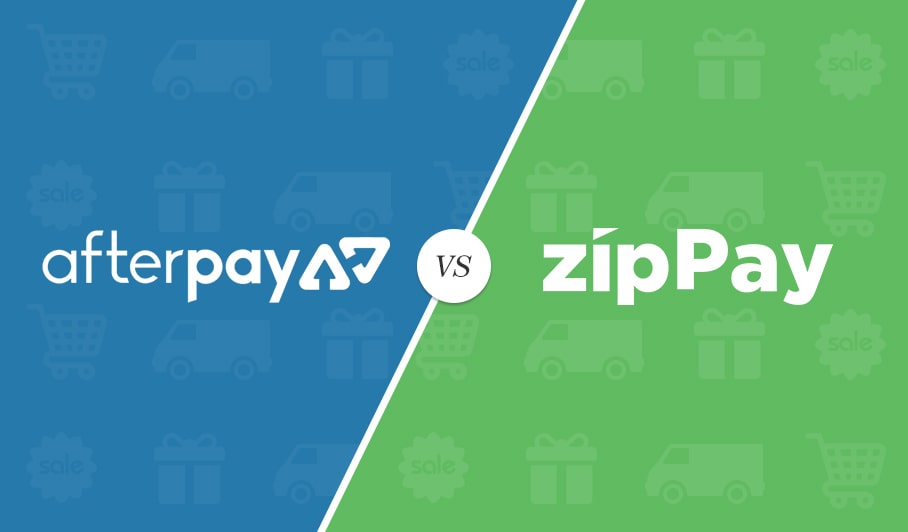- Afterpay and ZipPay are among Australia’s top buy now pay later providers
- Their apps have boosted their businesses
- There are main differences on how each company works
- Are there other alternative options? Are they better?
Afterpay was founded in 2014 and introduced its app in 2017. Although ZipPay was around a year earlier than Afterpay, their app launched only by 2018. In over a year Afterpay has taken the lead but ZipPay is just close behind.
These popular buy now pay later services have different terms. One may be a better option based on the loan, schedule, and amount of time for repayment. You can browse this comparison review to know how each provider works.
Buy now pay later service gets bigger

Buy now pay later providers have become popular online due to the yearly increase of online shoppers. While it is also available as an in-store option, the launch of their apps has attracted more new users of the service. The Covid19 situation further boosted its online presence since last year.
Afterpay was one of the first to adapt by launching their app. They have gained more users as shoppers want other more convenient ways of making their payments. These are mostly millennials and Gen Z users and those who can access it on their mobile phones. The uptrend of online sales and buy now pay later providers also coincides with the economic landscape.
Afterpay’s main leading features
Afterpay offers a fast and convenient credit purchasing option without many difficult requirements such as credit checks and proof of financial capability. They can get their purchases instantly just like regular in-store and online shopping, with an easy installment schedule. There are no further fees involved.
- Free to use with zero interest rate and no hidden fees
- Four, fortnightly payments to pay off the total amount
- Late payment fees are at $10 for the first time and $7 for each 7 days it is not paid
- Late payments will not affect your credit rating
- Available in over 48,400+ retailers instore and online
- Pulse rewards system
Afterpay also has a business option that connects with retailers and other businesses. They can sign up and apply on their website via an application form to add Afterpay as an additional payment option. This will expand their reach and get more new customers. They have a current count of over 11+ million.
Zip Pay’s terms and conditions
ZipPay has become one of the leading BNPL services around that can go head to head with the more popular Afterpay; They have a few more convenient payment options that are lighter for in-store and online shoppers. Consider these terms:
- Free to use with zero interest and no further fees
- Choose from three payment schedules: weekly, fortnightly, monthly
- Only $6 a month for late or non-payment fees
- 22,000+ stores that carry it
- $1000 credit limit at $40 a month minimum repayment
ZipPay’s other advantage is with its business partnerships. They currently offer three tiers of ZipPay for business, which helps businesses and retail shops to partner with ZipPay with three new features:
- Zip Business Payments: Add ZipPay to your business as a payment option for online and in-store shopping.
- Zip Business Trade: Pay later loan services for your business, up to $3000 with zero interest. It has the same flexible payment options.
- Zip Business Capital: ZipPay business loan with repayment options good for 3 years. ZipPay will base the interest rate only on the total loan amount.
Afterpay and ZipPay’s main differences
In comparison, Afterpay has a larger network of customers and retailers that carry it, making it widely available for online and in-store shopping. This puts more buying power and a wider selection for customers. They are more present than any other services, including ZipPay.
Afterpay has a set installment schedule for four fortnightly payments, which can be convenient for smaller purchases. However, their late payment fees are higher than most providers and are a candidate for the debt trap mechanism if the customer is not 100% sure of their available funds and when they can pay them.
On the other hand, ZipPay has the edge on easier payment terms and fees. This is a bigger advantage for many customers since it is more flexible and there is an upfront $40 a month repayment term that can be done weekly, fortnightly, and monthly. ZipPay does have an impressive roster of shops as well. The continued expansion of the company to more retailers and customers is still growing.
Another main advantage that will expand ZipPay’s reach to both more customers and businesses is their business partnership program. It is more extensive than other buy now pay later companies offering business deals with retailers.
ZipPay may be more affordable and flexible than Afterpay. But both of them are also for different types of customers.
Afterpay and ZipPay versus other payment options
If we are to consider credit cards the comparison is different; there is a monthly billing cycle that carries a bigger credit limit set for each month. The case of late payment fees also carry interest rates and additional fees. It also involves a commitment contract and many requirements to avail.
And to use both Afterpay and ZipPay, credit cards are the main fund source; also debit cards, and direct debit from banks. Afterpay and other buy now pay later services are digital platforms that are more specialized than cards. They have smaller or custom payment options more suited for online shopping.
They are more like a digital extension of your credit cards when a credit card is used as the main fund source of your BNPL account. It lets you make smaller purchases that won’t affect or add to your credit card terms.
Since bank loans are too big and general they are out of the question. Even business loans offered by ZipPay are much smaller and have easier terms to cover. These reasons make BNPL payment schemes unique because they mainly deal with smaller amounts, installment payments, and no extra fees.



